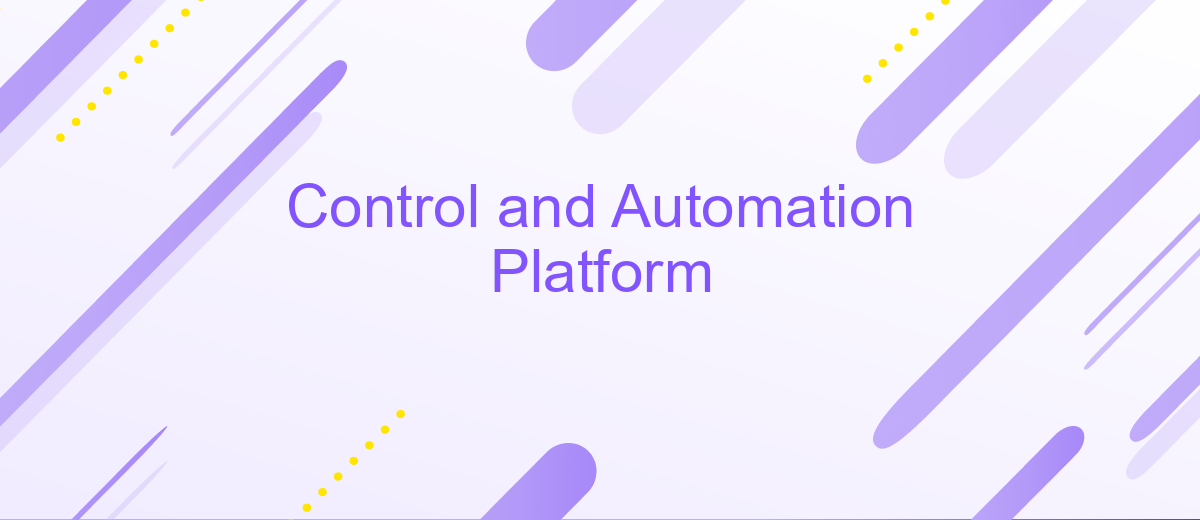Control and Automation Platform
In today's rapidly evolving technological landscape, the integration of control and automation platforms has become essential for enhancing operational efficiency and productivity across various industries. These platforms provide a centralized solution for monitoring, managing, and optimizing complex processes, enabling businesses to reduce costs and improve reliability. By leveraging advanced technologies, companies can streamline operations, enhance decision-making, and maintain a competitive edge in the market.
Overview
The Control and Automation Platform is a comprehensive solution designed to streamline and enhance industrial processes through advanced automation technologies. By integrating various control systems and tools, this platform enables efficient monitoring, management, and optimization of operations across diverse industries. It facilitates seamless communication between devices and ensures real-time data processing, leading to improved decision-making and operational efficiency.
- Seamless integration of multiple control systems
- Real-time data processing and analytics
- Enhanced decision-making capabilities
- Scalability to meet evolving industrial needs
- Robust security features to protect data integrity
With its user-friendly interface and robust functionalities, the Control and Automation Platform empowers businesses to achieve greater productivity and reliability. It supports a wide range of applications, from manufacturing and energy management to transportation and infrastructure. By leveraging cutting-edge technologies, this platform not only reduces operational costs but also minimizes downtime and enhances overall system performance, making it an indispensable tool for modern industries.
Architecture

The architecture of a Control and Automation Platform is designed to provide a robust and scalable framework for managing diverse processes efficiently. The platform typically employs a modular approach, allowing seamless integration of various components and systems. This modularity facilitates the customization and expansion of functionalities according to specific business needs. Key elements include a centralized control unit, communication interfaces, and data processing modules that ensure real-time monitoring and decision-making capabilities. The architecture also emphasizes security, ensuring that data integrity and system operations are protected from unauthorized access and potential threats.
Integration capabilities are crucial for the platform's success, enabling it to connect with external systems and services. Tools like ApiX-Drive play a significant role in this aspect, providing a user-friendly interface for setting up integrations without extensive coding knowledge. ApiX-Drive allows the platform to interact with various external applications, streamlining workflows and enhancing operational efficiency. By leveraging such integration services, the platform can adapt to evolving technological landscapes, ensuring continuous improvement and innovation in automation processes.
Implementation

The implementation of a Control and Automation Platform requires a strategic approach to ensure seamless integration and functionality. Initially, a comprehensive assessment of the existing infrastructure is conducted to identify necessary upgrades or adjustments. This involves evaluating hardware compatibility, software requirements, and network capabilities. Once the assessment is complete, a detailed implementation plan is developed, outlining the steps and resources needed to achieve the desired automation goals.
- Conduct an initial assessment of current systems and infrastructure.
- Develop a comprehensive implementation plan with defined objectives.
- Upgrade or adjust hardware and software components as necessary.
- Integrate the platform with existing systems and test for compatibility.
- Train staff on the new platform to ensure effective utilization.
Following the integration, rigorous testing is conducted to ensure all systems are functioning as intended. This includes stress testing, security assessments, and performance evaluations. Continuous monitoring and iterative improvements are essential to maintain optimal performance and adapt to evolving business needs. Regular training sessions and user feedback loops are also crucial to maximize the platform's effectiveness and ensure it meets the organization's automation objectives.
Benefits

Implementing a Control and Automation Platform can significantly enhance operational efficiency across various industries. By streamlining processes and reducing manual intervention, businesses can achieve higher productivity and minimize errors. This technological advancement enables organizations to better allocate resources and focus on strategic growth.
Moreover, the platform offers real-time data monitoring and analytics, allowing companies to make informed decisions swiftly. Enhanced visibility into operations facilitates proactive management, reducing downtime and improving overall system reliability. This adaptability ensures that businesses remain competitive in rapidly changing markets.
- Increased efficiency and productivity
- Reduction in operational errors
- Improved resource allocation
- Real-time data monitoring and analytics
- Enhanced system reliability and reduced downtime
In conclusion, adopting a Control and Automation Platform is a strategic move that offers numerous benefits. It not only optimizes current operations but also lays the foundation for future advancements. As industries evolve, embracing such technologies will be crucial for maintaining a competitive edge and achieving long-term success.


Case Studies
In a recent implementation, a manufacturing company leveraged a Control and Automation Platform to enhance their production line efficiency. By integrating real-time monitoring and automated adjustments, they managed to reduce downtime by 30%. The platform enabled seamless communication between various machinery, optimizing the workflow and ensuring consistent quality. This transformation not only improved productivity but also reduced operational costs significantly, demonstrating the platform's capability to streamline complex industrial processes.
Another success story involves a logistics firm that utilized the Control and Automation Platform to optimize their supply chain operations. By integrating ApiX-Drive, they were able to automate data flow between their inventory management system and shipping partners. This integration facilitated real-time updates and tracking, reducing manual errors and enhancing decision-making. As a result, the company improved delivery times by 25% and increased customer satisfaction. The case highlights the platform's versatility in adapting to different industry needs and the value of incorporating robust integration services like ApiX-Drive for comprehensive automation solutions.
FAQ
What is a Control and Automation Platform?
How does an automation platform integrate with other systems?
What are the benefits of using a Control and Automation Platform?
Can automation platforms be customized to fit specific business needs?
How can businesses start implementing automation in their processes?
Strive to take your business to the next level, achieve your goals faster and more efficiently? Apix-Drive is your reliable assistant for these tasks. An online service and application connector will help you automate key business processes and get rid of the routine. You and your employees will free up time for important core tasks. Try Apix-Drive features for free to see the effectiveness of the online connector for yourself.

